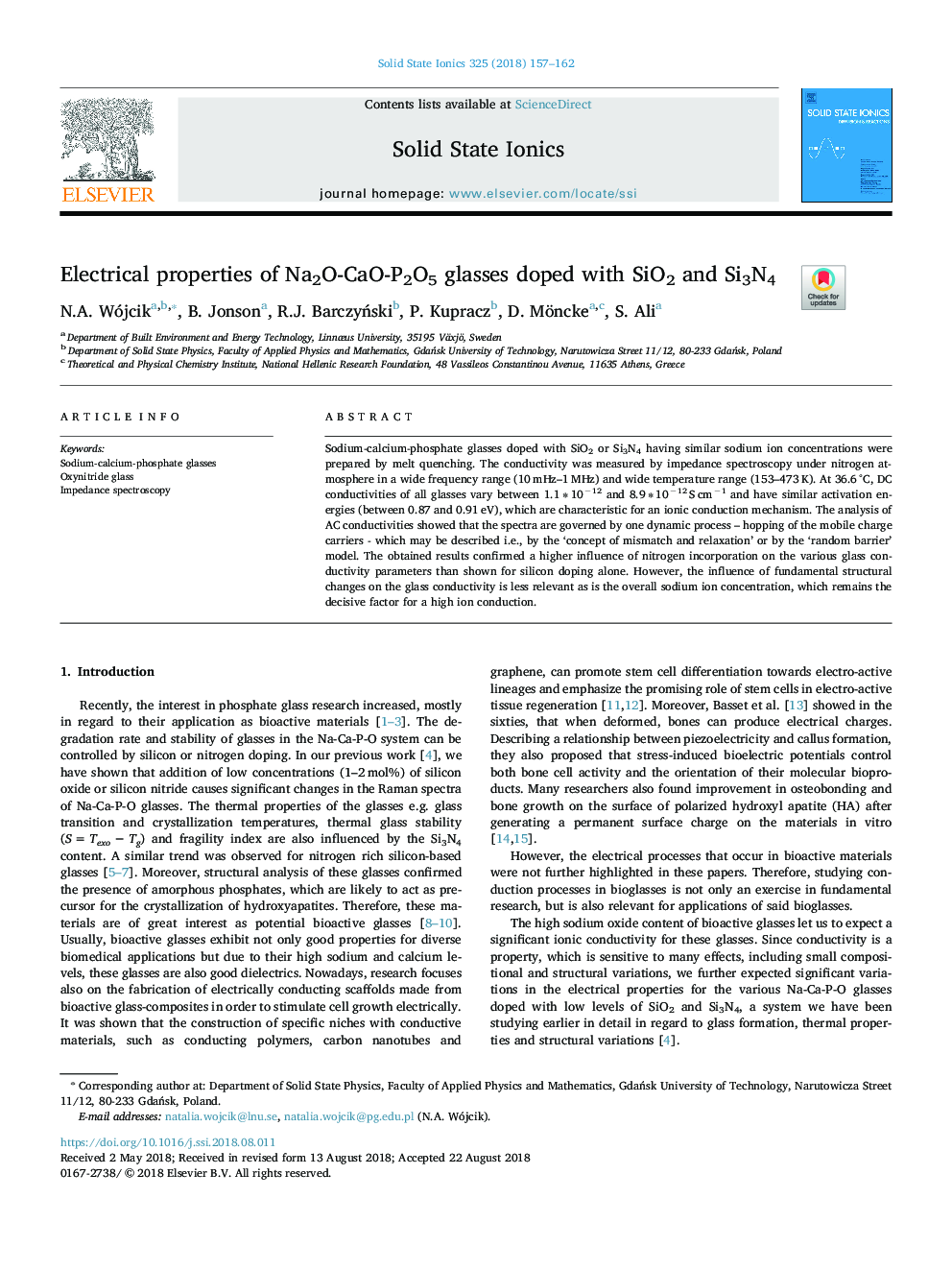| Article ID | Journal | Published Year | Pages | File Type |
|---|---|---|---|---|
| 11005946 | Solid State Ionics | 2018 | 6 Pages |
Abstract
Sodium-calcium-phosphate glasses doped with SiO2 or Si3N4 having similar sodium ion concentrations were prepared by melt quenching. The conductivity was measured by impedance spectroscopy under nitrogen atmosphere in a wide frequency range (10â¯mHz-1â¯MHz) and wide temperature range (153-473â¯K). At 36.6â¯Â°C, DC conductivities of all glasses vary between 1.1â¯ââ¯10â12 and 8.9â¯ââ¯10â12â¯Sâ¯cmâ1 and have similar activation energies (between 0.87 and 0.91â¯eV), which are characteristic for an ionic conduction mechanism. The analysis of AC conductivities showed that the spectra are governed by one dynamic process - hopping of the mobile charge carriers - which may be described i.e., by the 'concept of mismatch and relaxation' or by the 'random barrier' model. The obtained results confirmed a higher influence of nitrogen incorporation on the various glass conductivity parameters than shown for silicon doping alone. However, the influence of fundamental structural changes on the glass conductivity is less relevant as is the overall sodium ion concentration, which remains the decisive factor for a high ion conduction.
Related Topics
Physical Sciences and Engineering
Chemistry
Electrochemistry
Authors
N.A. Wójcik, B. Jonson, R.J. BarczyÅski, P. Kupracz, D. Möncke, S. Ali,
